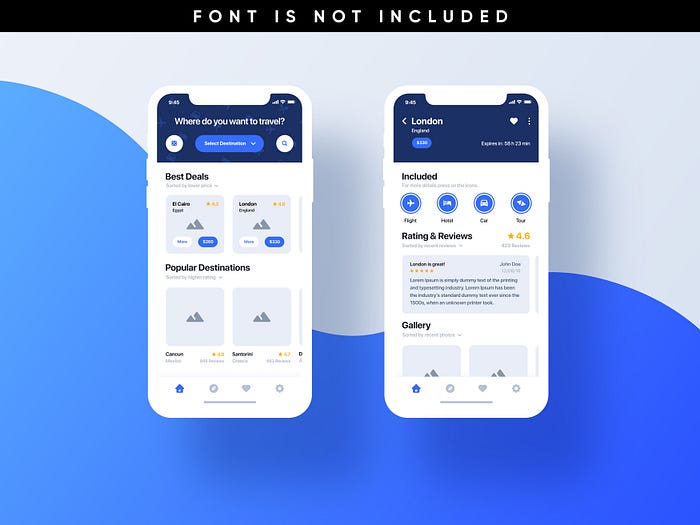
Users expect apps that feel intuitive, effortless, and even enjoyable. But creating such seamless experiences isn’t just about choosing the right colors or icons, it’s about understanding how people think, feel, and behave.
That’s where UX psychology comes in. For every mobile app designer, mastering the psychological principles behind user behavior can be the difference between an app that people use once and one they can’t live without.
Let’s explore why UX psychology is a secret weapon for designing mobile apps that users truly love.
1. What Is UX Psychology?
UX psychology is the science of understanding how users interact with digital products. It combines cognitive science, behavioral psychology, and design principles to create experiences that feel natural and engaging.
When a mobile app designer applies UX psychology, they’re not just designing screens — they’re designing how users think and feel while navigating an app.
For example, when a loading spinner reassures users that progress is happening, or when a call-to-action button draws attention at the perfect moment — that’s UX psychology in action.
2. Why Mobile App Designers Need UX Psychology
✅ a. Helps Create Emotionally Engaging Experiences
Users connect emotionally with well-designed apps. Through thoughtful colors, micro-interactions, and animations, designers can evoke feelings like trust, excitement, or calm.
For example, Spotify uses subtle animations and a dark UI theme to make users feel immersed in the music experience. It’s not just beautiful — it’s emotionally smart design.
✅ b. Improves User Retention and Engagement
An app that “feels right” keeps users coming back. UX psychology helps designers understand habit formation — how to encourage repeated usage through positive reinforcement.
Think about Duolingo’s streak reminders and progress bars. These small psychological nudges make users feel rewarded and motivated to continue learning daily.
✅ c. Reduces Cognitive Load
The human brain can only process so much information at once. UX psychology teaches designers how to reduce cognitive load — simplifying choices and layouts so users can focus on what matters.
For instance, Google Maps uses visual hierarchy and intuitive icons so users instantly understand what to do, even without reading instructions.
✅ d. Builds User Trust
Trust is everything in mobile design. Users are more likely to share data or make purchases if they feel safe. UX psychology helps designers use color, tone, and consistent UI elements to build that trust subconsciously.
For example, PayPal’s use of blue — a color associated with safety and reliability — helps users feel secure while making transactions.
3. Core UX Psychology Principles Every Designer Should Know
To design smarter, every mobile app designer should understand these key psychological principles:
1. Hick’s Law – Simplify Decision Making
The more options you present, the longer it takes users to decide. Limit visible choices and group related actions to improve speed and satisfaction.
Example: Apple’s Settings app keeps categories simple and predictable, reducing mental friction.
2. Fitts’s Law – Design for Easy Interaction
The time it takes to reach a target depends on its size and distance. Larger buttons and touch targets make apps more accessible and efficient.
Example: Netflix uses large, thumb-friendly buttons for “Play” and “Next Episode,” enhancing usability.
3. Gestalt Principles – Visual Organization
Users naturally group visual elements that look similar. Consistent spacing, alignment, and patterns help users predict behavior and navigate effortlessly.
Example: Instagram’s uniform grid layout is a perfect example of visual harmony using Gestalt principles.
4. The Zeigarnik Effect – Encourage Completion
People remember unfinished tasks more than completed ones. Use progress bars, loading animations, and step indicators to motivate users to complete actions.
Example: LinkedIn’s profile completion bar nudges users to fill in missing details.
5. Color Psychology – Influence Emotions
Colors trigger emotions and actions. For example, red signals urgency, blue builds trust, and green implies success. Choosing the right color palette can dramatically impact conversion and engagement.
Example: Calm’s app uses soft blues and purples to create a sense of relaxation and focus.
4. How UX Psychology Shapes Better App Experiences
Understanding UX psychology allows mobile app designers to:
- Craft intuitive navigation that aligns with user expectations
- Use visual hierarchy to guide user attention
- Apply micro-interactions that feel rewarding
- Create emotional resonance through design consistency
It’s not just about making things look good — it’s about making them feel right.
5. Real-World Example: Headspace’s Design Psychology
Headspace, the popular meditation app, is a great example of UX psychology at work.
- It uses friendly illustrations to reduce anxiety and make mindfulness approachable.
- The soft color palette promotes calmness.
- The simple navigation minimizes stress and helps users stay focused.
This combination of design and psychology turns what could be a complex experience into something peaceful and engaging.
6. Tips to Apply UX Psychology in Your Next Mobile Design
- Start with empathy. Understand your users’ pain points, motivations, and emotional triggers.
- Design for simplicity. Each screen should have one clear goal.
- Use feedback loops. Micro-animations or success messages create positive reinforcement.
- Create familiarity. Reuse patterns that users already know from other popular apps.
- Test, analyze, refine. Observe user behavior and tweak your design based on insights.
Conclusion
The best mobile app designers don’t just think like artists — they think like psychologists. Understanding UX psychology helps you create apps that don’t just function, but connect.
In 2025, where user attention spans are shorter than ever, psychological design principles are no longer optional — they’re essential.



